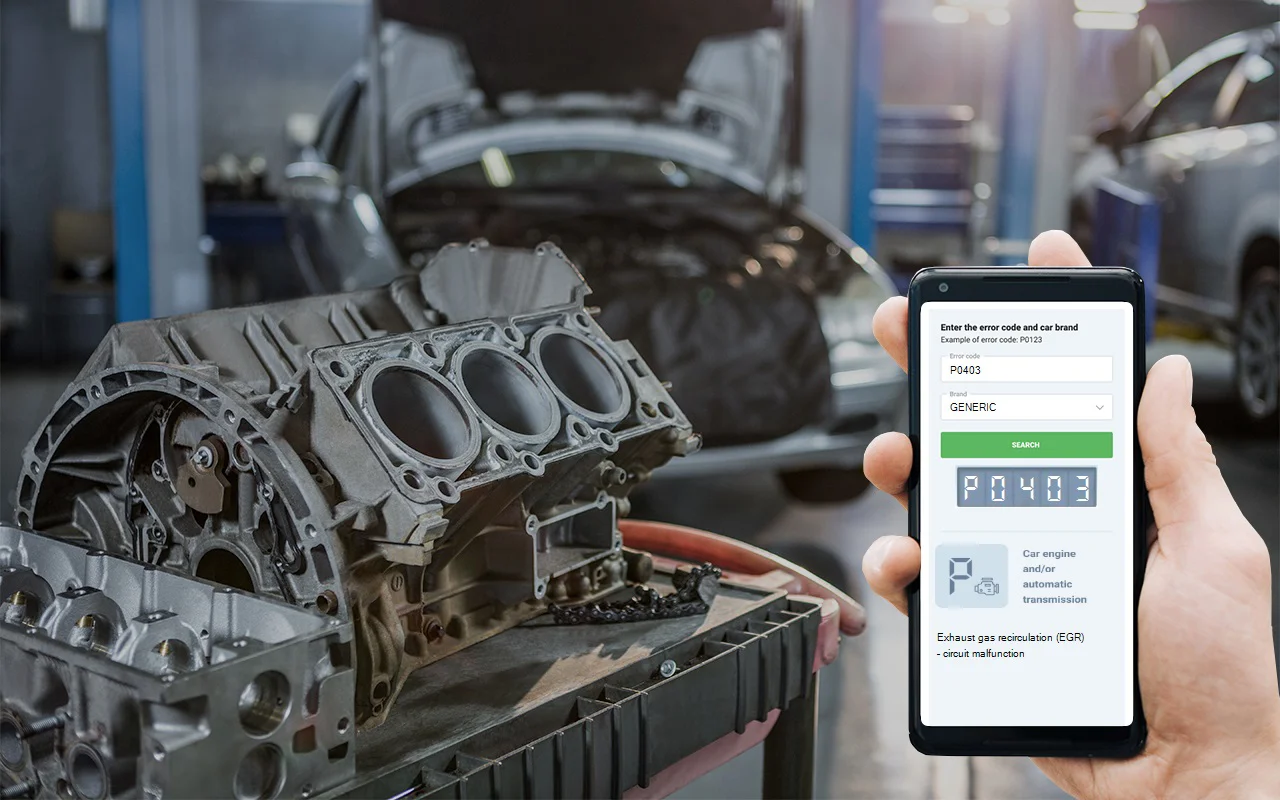Causes of OBD P0403
Possible causes for the activation of the P0403 code include:
- Vacuum line leak in the EGR system.
- Short circuit in the EGR system solenoid.
- Water infiltration or blockage in the solenoid.
- Potential malfunctions in the Engine Control Module (PCM).
- Loose connections on the EGR solenoid.
- Possible malfunction of the EGR valve itself.
Symptoms of P0403 Error
Some vehicles may not exhibit many symptoms other than the Check Engine light, which indicates this type of issue.
Others may experience the following problems:
- Engine stalling.
- Misfires during the initial start, which may disappear after the engine warms up.
- Strong fuel odor from the exhaust pipe.
- Deactivation of the Exhaust Gas Recirculation (EGR) system by the Engine Control Module (ECM).


Common Mistakes When Dealing with OBD P0403 Code
Before replacing solenoids and sensors, it is important to check the following items that may go unnoticed:
- Wiring inspection: Check the wiring for any damage, such as cuts, abrasion, or exposed wires. Pay particular attention to the wires leading to the EGR sensor and ensure they are not frayed or shorting out.
- Connector and port inspection: Examine connectors and ports for signs of fluid or corrosion. Any traces of liquid or corrosion can degrade connections and prevent proper signal transmission.
Performing these checks before replacing components can help identify potential issues that may be causing the P0403 error and prevent unnecessary time and money spent replacing parts that may actually be fine.

How to Fix the P0403 Code?
If you notice any damage to the wiring, it is recommended to replace or repair this part first. Damaged wiring is one of the most common issues associated with OBD-II error codes and triggering the check engine light.
It is also important to check for corrosion at connection points, especially with the EGR solenoid and sensor. Corrosion can be another common issue.
Ultimately, if all other options have been exhausted, replacing the EGR solenoid may be necessary to resolve the issue.
Conclusion
Diagnosing the P0403 code can be an important step, as it may indicate serious issues. For example, the proper functioning of the Exhaust Gas Recirculation (EGR) system helps control combustion temperatures, reducing the environmental impact due to less harmful emissions.
If your ECM disables the EGR due to a sensor signal, this may point to significant problems with the system’s operation. In such cases, it is recommended to visit an auto repair shop for diagnostics and to resolve the issues as soon as possible.
Video for "Error p0403" on YouTube
The following error codes are often searched for
OBD P0403 code analysis and solutions
The page presents a detailed analysis of code P0403 for Opel, Renault, VW (Volkswagen), Ford, Peugeot, Mitsubishi, Skoda, BMW, Citroën, Toyota, Lada, Honda, Kia, and other models to analyze potential factors and solutions related to OBD-2 errors, with emphasis on the issue. We provide engineering documentation and methods for diagnostics to identify and overcome the difficulty effectively. We aim to make our resource a comprehensive source of information on issues related to OBD 2 errors, equipping you with the means for effective repair and maintenance of your auto. If during the repair of OBD-2 codes you need to purchase parts, don’t forget to visit Avtopro!







